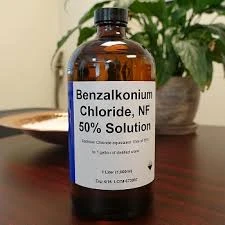coagulant flocculant
The Importance of Coagulants and Flocculants in Water Treatment Processes
Water is an essential resource for life, yet it is often contaminated by various pollutants, making treatment necessary before it can be safely consumed or returned to the environment. Among the numerous chemicals used in water treatment processes, coagulants and flocculants play a pivotal role in removing suspended solids and improving water quality. This article explores the functions, types, and significance of coagulants and flocculants in water treatment.
Understanding Coagulants and Flocculants
Coagulants are chemical substances that promote the aggregation of suspended particles in water. When added to water, coagulants neutralize the electrostatic charges on these particles, allowing them to come closer together and form larger aggregates. The process of coagulation is usually the first step in the treatment of water, targeting colloidal particles that are too small to settle by gravity alone.
Flocculants, on the other hand, are agents that assist in the further agglomeration of these particles into larger clusters known as flocs. After coagulation has occurred, flocculants are added to enhance the settling and filtration of these larger aggregates, making it easier to remove them from the treated water. Together, coagulants and flocculants help in achieving clearer, purified water.
Types of Coagulants
There are various types of coagulants used in water treatment, each with specific applications based on water quality and treatment objectives. Commonly used inorganic coagulants include aluminum sulfate (alum), ferric chloride, and polyaluminum chloride. These substances are highly effective at eliminating turbidity and removing pathogenic microorganisms from water.
Organic coagulants, such as natural polymers and synthetic long-chain polymers, are also utilized. These organic coagulants are often preferred in specific situations due to their lower dosage requirements and reduced production of sludge compared to inorganic compounds. The choice of coagulant depends on several factors, including pH levels, the nature of the contaminants, and the desired removal efficiency.
coagulant flocculant

Types of Flocculants
Flocculants can be categorized into two primary types inorganic and organic. Inorganic flocculants, such as calcium hydroxide and certain metal salts, are less common but can be used in specific scenarios like heavy metal removal. Organic flocculants, including polyacrylamides and natural gums, are more widely used due to their effectiveness at promoting floc formation at lower concentrations.
Organic flocculants are typically characterized by their high molecular weight and can be cationic, anionic, or nonionic. Cationic flocculants carry a positive charge and are especially effective at binding with negatively charged particles, making them suitable for a variety of water treatment applications.
The Significance of Coagulants and Flocculants
The importance of coagulants and flocculants in water treatment cannot be overstated. Effective coagulation and flocculation processes increase the efficiency of sedimentation and filtration, significantly reducing the operational costs of water treatment facilities. By optimizing these processes, not only is the amount of chemical dosage minimized, but the production of sludge is also reduced, leading to lower disposal costs and a smaller environmental footprint.
Furthermore, the removal of contaminants, such as heavy metals, sediments, and pathogens, ensures that the treated water meets safety standards for public consumption and environmental discharge. This is crucial in safeguarding human health and protecting aquatic ecosystems.
Conclusion
Coagulants and flocculants are indispensable components of water treatment processes that ensure safe and clean water for consumption and environmental protection. As challenges related to water quality continue to grow, understanding and efficiently utilizing these agents will be critical for sustainable water management. Through ongoing research and innovation, the field of water treatment can continue to evolve, further improving public health outcomes and environmental conservation efforts.
-
Water Treatment with Flocculant Water TreatmentNewsJun.12,2025
-
Polymaleic AnhydrideNewsJun.12,2025
-
Polyaspartic AcidNewsJun.12,2025
-
Enhance Industrial Processes with IsothiazolinonesNewsJun.12,2025
-
Enhance Industrial Processes with PBTCA SolutionsNewsJun.12,2025
-
Dodecyldimethylbenzylammonium Chloride SolutionsNewsJun.12,2025





